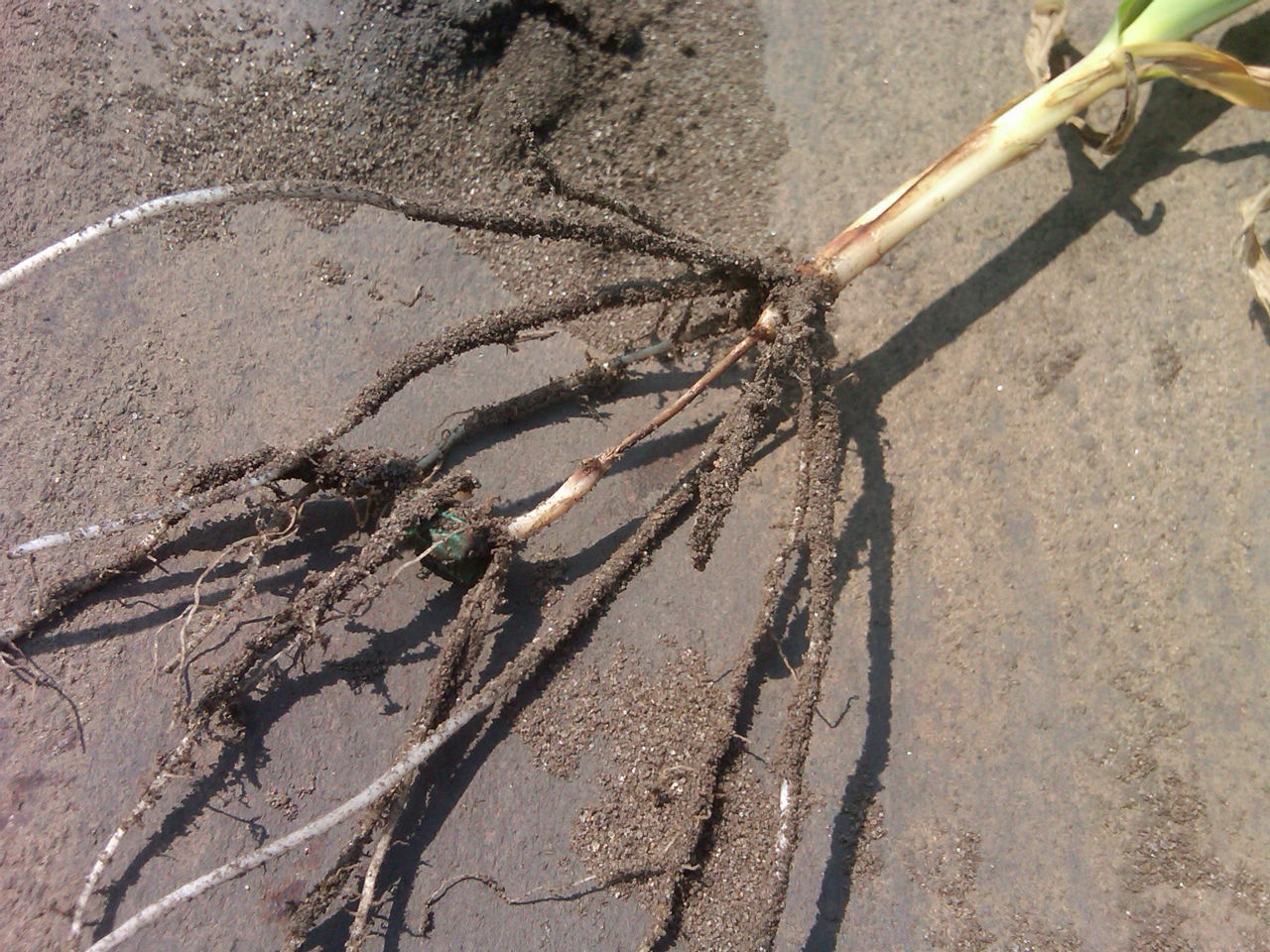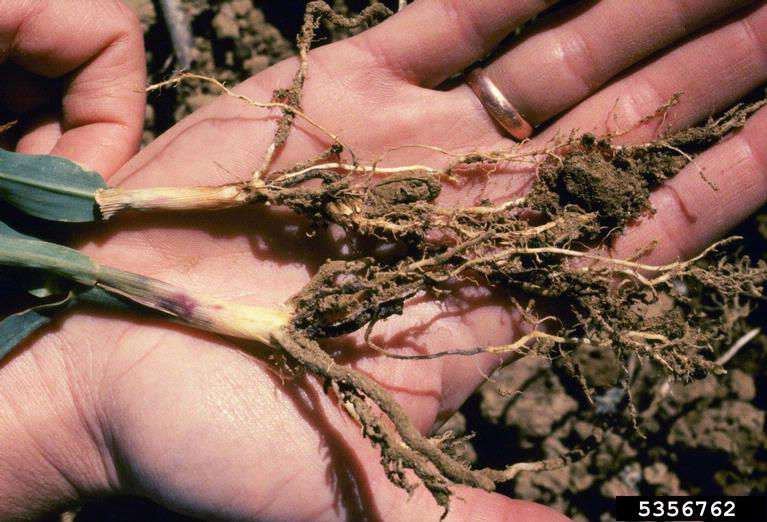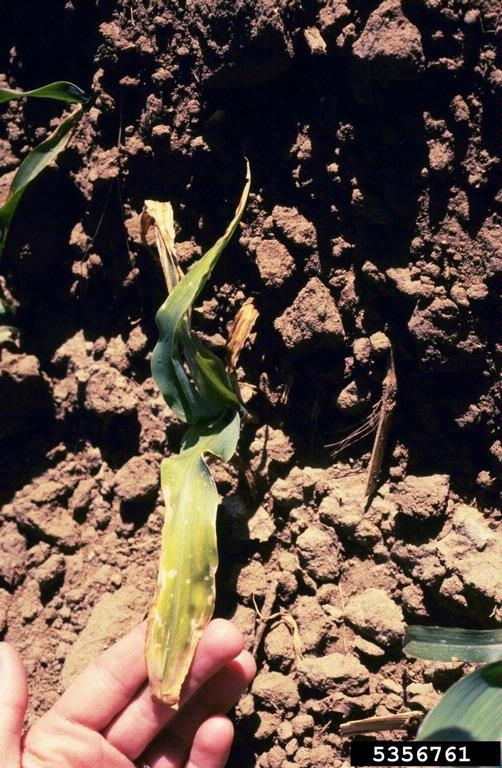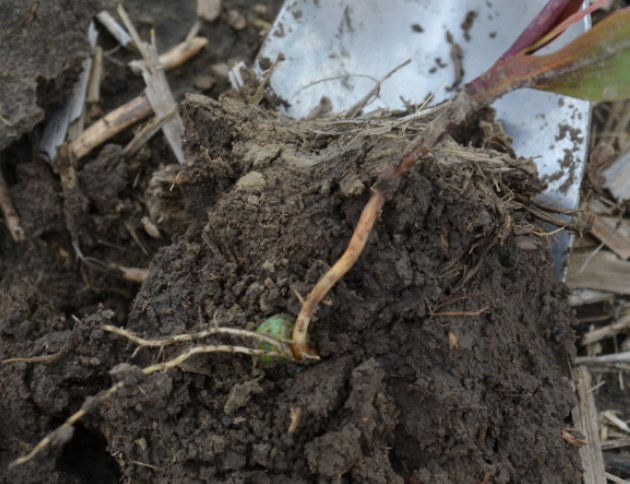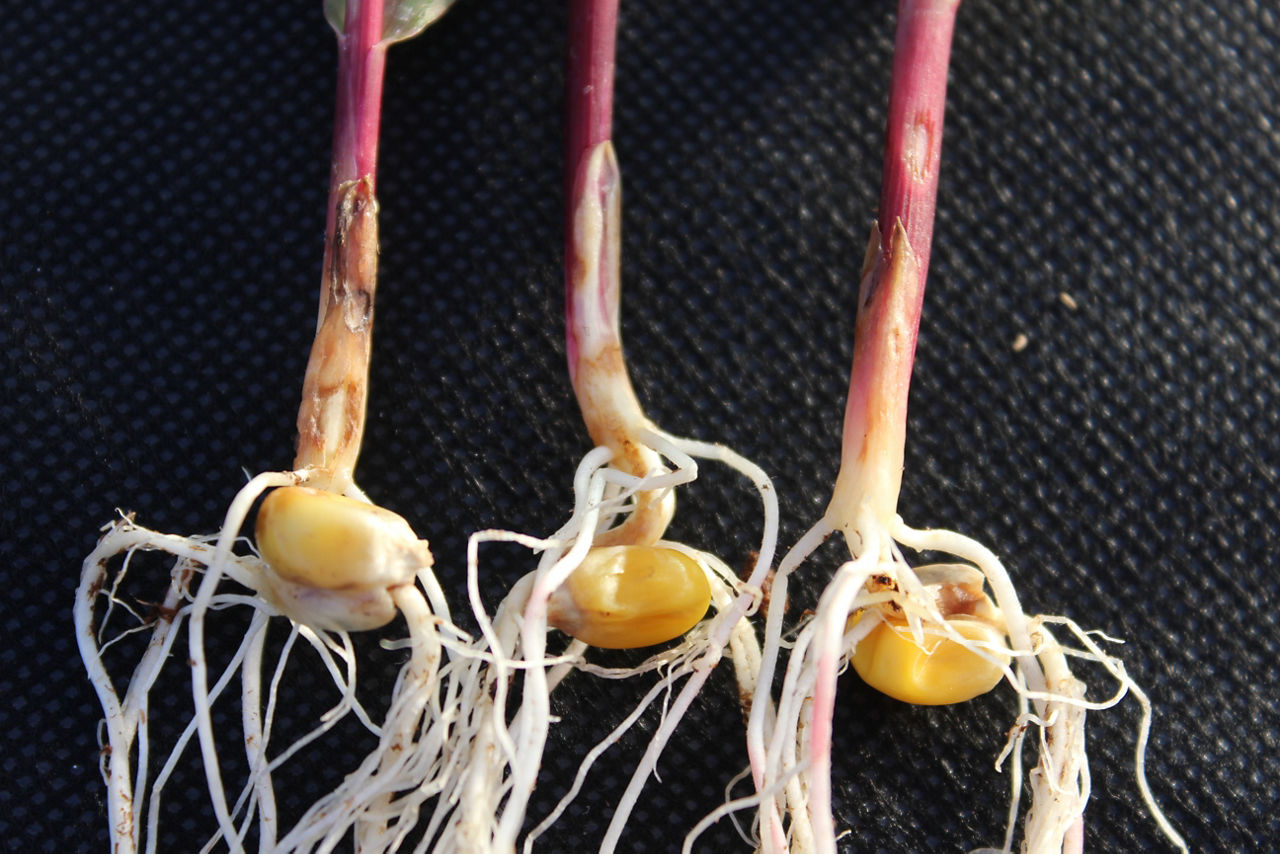20 MIN READ
Identification of Southern Area Corn Diseases
February 22, 2021
The potential for corn seeds and plants to become infected with a disease is greatly determined by genetics, use of fungicidal seed treatments, environmental conditions, time in the growing season, and the presence of casual agents (fungal or bacterial pathogens, viral vectors, and nematodes). The warm, humid southern environment is very favorable for the development and propagation of many corn diseases.
Newly planted seeds are immediately subjected to pathogenic fungi and bacteria that inhabit the soil. In general, these pathogens have a greater potential for causing damage when soils are wet and cold; however, some pathogens prefer warm conditions. Infected seedlings may show signs of damping-off or rotting, stunting, yellowing leaves or loss of color, and deformities.
Susceptibility to diseases depends largely on the level of genetic resistance to a disease. Some seed products can have nearly complete resistance while others are very susceptible. When selecting seed products for planting, the historical disease presence should be considered, and seed selections made accordingly.
Foliar fungal diseases may become apparent anytime during the season depending on the presence of the pathogen. Many fungal pathogens can overwinter on or in infected residue and can contact plants via splashing rain or wind. Pathogens that are unable to overwinter in the southern areas of the United States can be carried in from Mexico, the Caribbean Islands, and South America on wind currents. Hurricanes have been known to bring diseases into new areas. Depending on the disease, foliar fungicides may provide control.
Bacterial diseases can also overwinter on infected residue. The bacterium can contact plants through water movement in the soil, splashing rain, wind-driven rain, and mechanical means such as cultivating when plants are wet. Infection occurs when bacterium enter the plant through wounds or natural tissue openings such as stomates.
Viral diseases rely on a vector such as aphids or thrips to infect a plant. As the vector feeds, infected juices are injected into plant tissue. Scouting for insects that have the potential to vector viral diseases and applying a timely insecticide may help protect plants from becoming infected via insect feeding. Caution should be taken not to spray insecticides without proper identification as many beneficial insects can be killed.
Additional harvest-time diseases include stalk and ear rots. Stalk rots can result in lodging that can diminish harvest speed, increase harvesting equipment wear and tear, decrease grain quality, and increase the potential for personal injury. Ear rots can affect grain quality, test weight, and marketability. Some ear rots produce toxins that can be harmful or even lethal to livestock and humans.
Nematodes are often discussed under the disease umbrella; however, they are microscopic parasitic worms that live outside (ectoparasitic) or within (endoparasitic) corn roots. Nematode infestations may go unnoticed, particularly under favorable growing conditions, or cause stunting, nutrient deficiencies, and create entrance wounds for other pathogens.
Click below on Seed and Seedling, Foliar, Viral, Stalk, Ear Rot, or Corn Nematodes to identify and learn about the corn diseases on your farm.
Sources:
Faske, T. and Kirkpatrick, T. Corn diseases and nematodes. Arkansas Corn Production Handbook. Chapter 7. Division of Agriculture Research & Extension. University of Arkansas System. https://www.uaex.edu/.
Kelly, H.M. Common corn diseases in Tennessee. University of Tennessee. http://utcrops.com/.
Wise, K., Anderson, N., Mehl, K., and Bradley, C.A. 2018. Diplodia leaf streak. PPFS-AG-C-08. University of Kentucky. http://plantpathology.ca.uky.edu/.
Wise, K. 2019. Common corn diseases observed recently. Corn Disease Update. University of Kentucky. https://kentuckypestnews.wordpress.com/.
Sweets, L. 2014. Seed decay and seedling blights of corn. Integrated Pest Management. University of Missouri. https://ipm.missouri.edu/.
Wise, K., Anderson, N., Mehi, K., and Bradley, C.A. 2019. Curvularia leaf spot. PPFS-AG-C-09. University of Kentucky.
Bessin, R.T., Green, J.D., Herbek, J., Johnson, D.W., Martin, J.R., Murdock, L., Townsend, L., Vincelli, P., Witt, W.W., and Lucas, P. (editor). 2015. Kentucky integrated crop management manual for field crops “Corn”. Section 2, Pages 30 to 60. IPM-2. University of Kentucky.
French, R.D. and Schultz, D. 2010. Head smut of corn. PLPA-Co-010-02. AgriLIFE Extension. Texas A&M System. https://agrilifecdn.tamu.edu/.
Wise, K., Mehl, K., and Bradley, C.A. 2017. Holcus leaf spot. PPFS-AG-C-06. University of Kentucky. https://plantpathology.ca.uky.edu/.
Bradley, C.A., Mehl, K., and Pfeufer, E. 2017. Stewart’s wilt of corn. PPFS-AG-C-04. Plant Pathology Fact Sheet. University of Kentucky. https://plantpathology.ca.uky.edu/.
Zambrano, J.L., Stewart, L.R., and Paul, P.A. 2016. Maize chlorotic dwarf of maize. PLPAH-CER-08. CFAES. Ohioline. Ohio State University Extension. https://ohioline.osu.edu/.
Robertson, A. and Munkvold. G. 2000. Check general root and mesocotyl health when assessing corn stands. Iowa State University Extension. https://crops.extension.iastate.edu/.
Jackson-Ziems, T. and Korus, K. 2013. Seedling diseases appearing in corn. University of Nebraska. https://cropwatch.unl.edu.
Sweets, L. and Wright, S. 2008. Corn diseases. University of Missouri. https://ipm.missouri.edu.
Compendium of corn diseases. 1999. APS Press.
Jackson-Ziems, T. Bacterial leaf streak. CROPWATCH. University of Nebraska. https://cropwatch.unl.edu.
Bissonnette, S. 2015. Another corn disease alert: New bacterial leaf disease ‘bacterial stripe’ (Burkholderia andropogonis) of corn identified in Illinois. Blog Archives. The Bulletin. University of Illinois. http://bulletin.ipm.illinois.edu/.
Bacterial stripe of corn (maize). Burkholderia andropogonis. Plant Diseases Caused by Bacteria – NARRATIVES. PlantDiseases.org. University of California, Berkeley. https://www.plantdiseases.org/.
Ernest, E. 2013. What causes black spots on corn stalks? University of Delaware.
Red root rot. Extension & Outreach. University of Illinois. http://extension.cropsciences.illinois.edu/.
Sweets, L. and Kallenbach, R. 2012. Black corn fields. Integrated Pest Management. University of Missouri. https://ipm.missouri.edu/.
Head smut of corn. Crop Protection Network. https://cropprotectionnetwork.org/.
Bruns, H.A. 2017. Southern corn leaf blight: A story worth retelling. Agronomy Journal. Volume 109, Issue 4. American Society of Agronomy. https://www.ars.usda.gov/.
Wise, K., Ruhl, G., and Creswell, T. Tar spot. BP-90-W. Diseases of Corn. Purdue Extension. Purdue University.
Jardine, D.J. Corn lethal necrosis. Factsheets – Corn. Kansas State University. https://www.plantpath.k-state.edu/.
Bissonnette, S. 2000. Wheat streak mosaic virus in field corn. The Bulletin. University of Illinois.
Jensen, S.G. The High Plains virus. A newly emerging problem of maize and wheat with world wide implications. University of Nebraska. https://nematode.unl.edu/.
Wheat-streak mosaic. 1989. RPD No. 120. Reports on Plant Diseases. Integrated Pest Management. University of Illinois. https://ipm.illinois.edu/.
Watkins, J. and Wegulo, S. Wheat streak mosaic virus. CROPWATCH. University of Nebraska-Lincoln. https://cropwatch.unl.edu/.
Kellerman, T.S., Rabie, C.J., van der Westhuizen, G.C., Kriek, N.P., and Prozesky, L. 1985. Induction of diplodiosis, a neuromycotoxicosis, in domestic ruminants with cultures of indigenous and exotic isolates of Diplodia maydis. PubMed.gov. US National Laboratory of Medicine. National Institutes of Health. NCBI. https://pubmed.ncbi.nlm.nih.gov/.
Thomison, P., Lohnes, D., Geyer, A., and Thomison, M. Troubleshooting abnormal corn ears. The Ohio State University. https://u.osu.edu/.
Robertson, A. 2004. Corn ear rots. Iowa State University. Integrated Crop Management Newsletter. IC-492(21). https://www.ipm.iastate.edu/.
Jackson, T. and Ziems, A. 2009. Corn ear rots and grain molds. CropWatch. University of Nebraska-Lincoln. http://cropwatch.unl.edu/.
Munkvold, G.P. 2002. Corn ear molds and mycotoxins. Integrated Crop Management News. 1712. IC-488(22). Iowa State University. http://lib.dr.iastate.edu/.
Paul, P. and Mill, D. 2009. Corn ear rot: Which one is it? Ohio State University. C.O.R.N. Newsletter 2009-35. https://agcrops.osu.edu/.
Corn ear and kernel rots. 1991. Integrated Pest Management. RPD No. 205. University of Illinois. http://ipm.illinois.edu/.
Grabau, Z. and Vann, C. 2017. Management of plant parasitic nematodes in Florida field corn production. ENY-001. University of Florida. http://edis.ifas.ufl.edu.
Ziems, T. 2015. Sampling for nematodes of corn. University of Nebraska-Lincoln. http://cropwatch.unl.edu.
Tylka, G. 2007. Nematodes in corn production: a growing problem? IC-498. Iowa State University Extension. http://www.ipm.iastate.edu.
Niblack, T. 2003. More details on corn nematodes. University of Illinois. http://bulletin.ipm.illinois.edu. Tiwari, Siddharth, Eisenback, J.D., and Youngman, R.R. Root-knot nematode in field corn. Publication 444-107. Virginia Cooperative Extension. Virginia Tech. Virginia State University.
Tylka, G. 2007. New cyst nematode species on corn. IC-498(21). Integrated Pest Management. Iowa State University. https://crops.extension.iastate.edu.
Web sites verified 9/10/2019. 1010_G3
